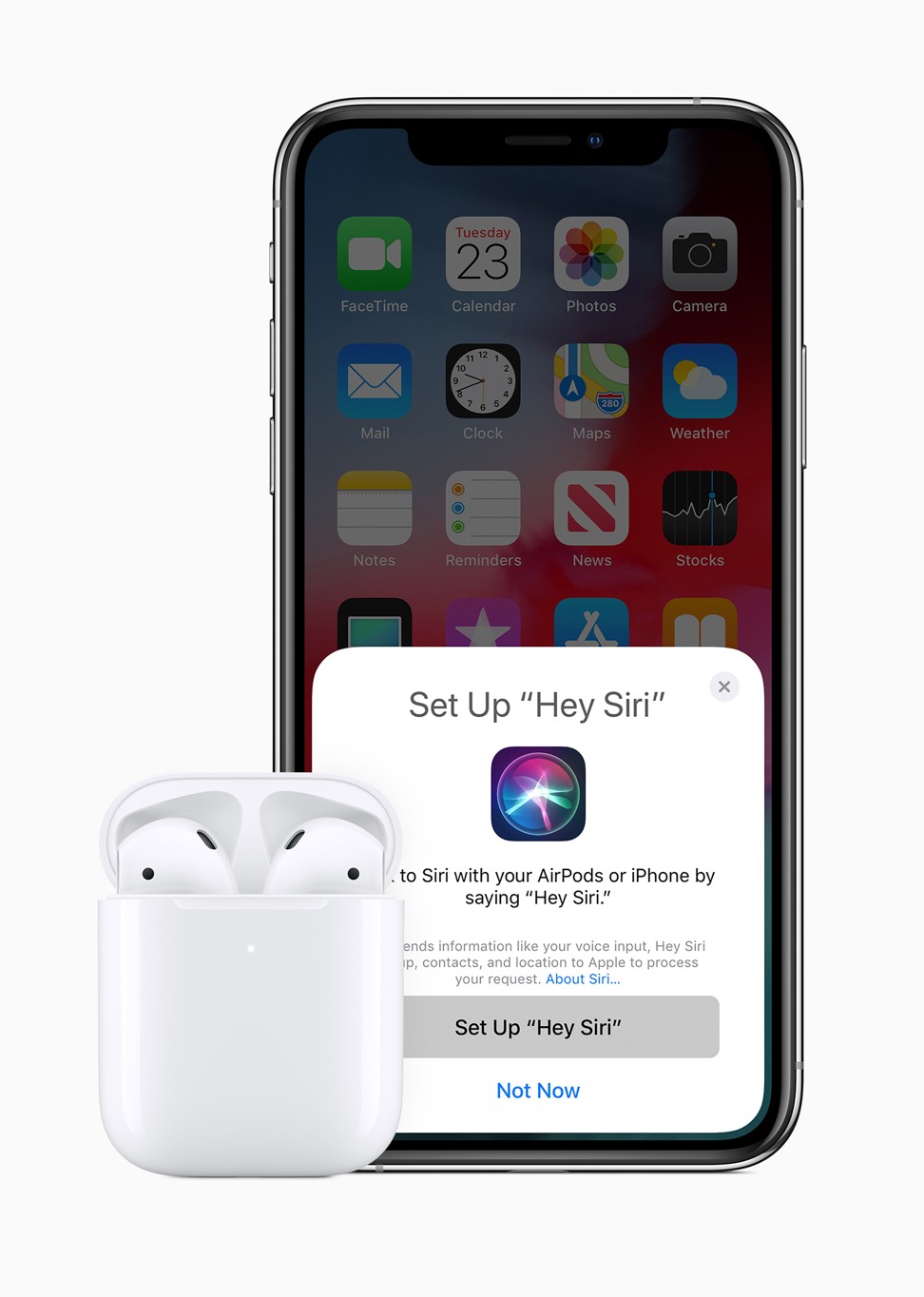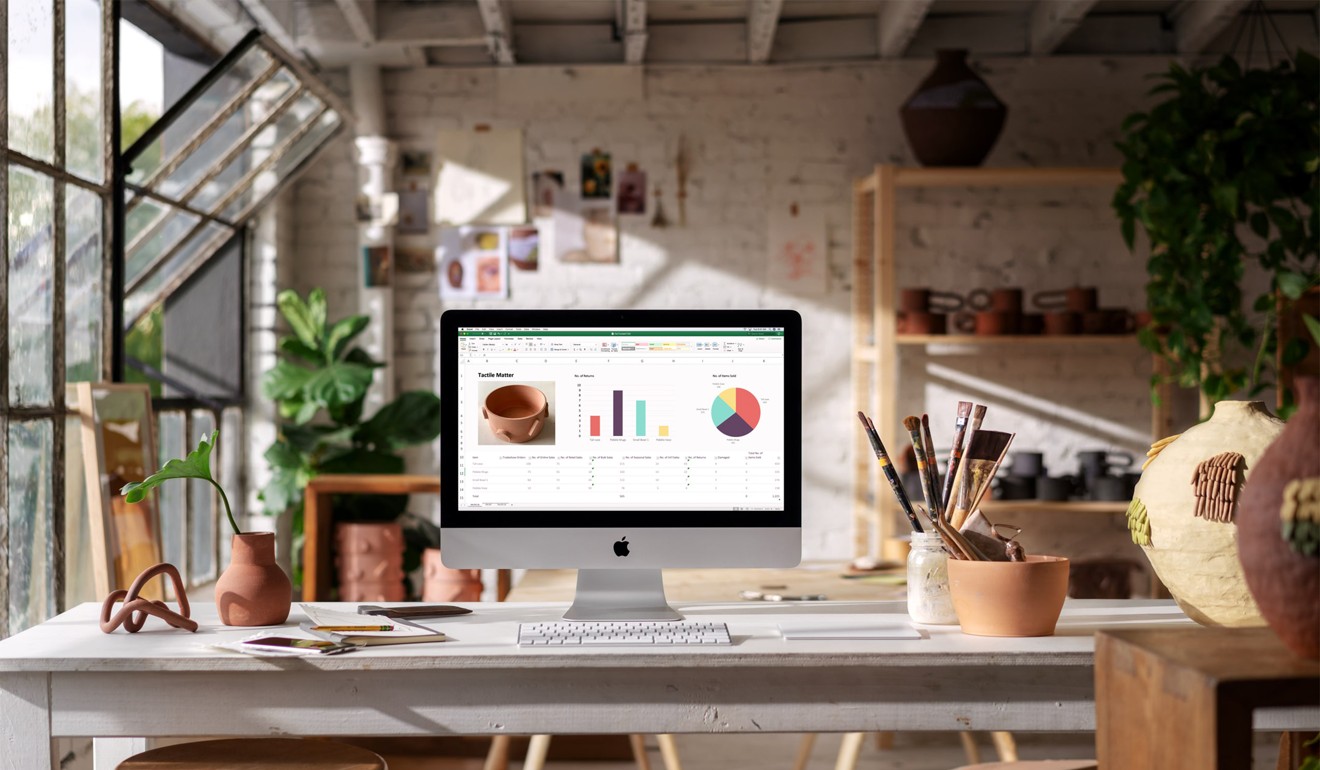
Apple upgrades iPads, iMacs and Airpods: find out the best changes and what’s missing
- None of Apple’s upgrades are dramatic, but there are a few tweaks worth knowing about
- Here is a breakdown of the updates, both good and indifferent, and changes Apple could have made but didn’t

Apple quietly introduced new AirPods, iPads and iMacs this week, just days ahead of a splashy launch event at its California headquarters on March 25.
Translation: you can probably hold onto your wallet.
Apple sometimes puts out smaller updates without a big to-do, but usually not for three days in a row before a big scheduled event. On Monday, Apple is expected to unveil new ways to get your money: subscription services for news and entertainment. By getting the hardware out of the way in advance, Apple is signalling how important services are becoming to its business in an era where upgrades don’t generate much buzz.
None of the changes dramatically reinvent the design or capabilities of the products. The biggest happy news is for people who’ve been holding out on buying an iPad mini and iMac – they’re both getting a welcome speed boost. The updated AirPod headphones will offer better battery life, but disappoint on other fronts.

For people who buy last-generation and used Apple products any time there are new Apple products, the older stuff that still works great gets cheaper. Check eBay and sites with refurbished products for some spectacular deals in the weeks ahead.
How do you figure out if it’s time for an upgrade? Here’s a rundown on what’s good – and what’s still missing – from each of this week’s updates.
AirPods
Over the past 2½ years, AirPods have grown from the butt of jokes (“Are those Q-tips hanging out your ears?”) to the favourite product of commuters and people who spend all day on the phone. But the 2019 update (priced US$159 to US$199) doesn’t move the needle much on simplicity – or make them work for more people.
What’s good
The battery in the second-generation AirPods promise an hour more of talking time, thanks to a more efficient processor. This is useful if the primary purpose of your AirPods is making calls, but probably won’t matter much for listening to music. (Even the first-generation AirPods could last up to five hours at a time for streaming music.)
For US$40 more, you can now get AirPods in a case that charges wirelessly. To take advantage of this, you’ll need to have access to wireless charging pads – which are still few and far between. You can use first-generation AirPods with the new wireless charging case, sold separately for US$79.
Apple superfans will like that the new AirPods listen out for the command “Hey Siri” to take your voice commands. The feature is an echo of Scarlett Johansson’s in-ear artificial intelligence in the 2013 film Her. But it’s not clear how much additional utility you get out of talking to Apple’s not-always-so-intelligent AI in your ear, as opposed to through an iPhone, Apple Watch or HomePod.
What’s missing
Apple is sticking with its one-size-fits-all design for its second-generation AirPods, but the reality is not all human ears are the same. Would it kill Apple to make small, medium and larger versions? I have no problem keeping AirPods in place while jogging … or headbanging, but many readers have told me AirPods simply won’t stay put.
Competitors, such as Samsung’s US$130 Galaxy Buds, come with different-sized plastic tips, but you’ll have to buy those in the aftermarket if you want custom-fit AirPods.
There are no noise cancelling capabilities and the colour is still only white.
Two years ago, Apple promised a wireless charger called AirPower that could charge the iPhone, Apple Watch and AirPods at the same time. This product, however, is still MIA.

iPads
Apple’s iPad line-up has never been larger or more confusing.
What’s good
A favourite reading device for many, the 7.9-inch iPad mini is looking strong again. The new US$399 Mini, last updated about two years ago, is now much faster, featuring the A12 processor also found in the iPhone XS and XR.
The Mini also works with the Apple Pencil stylus, which you can use to doodle and take notes. However, now that so many people have an iPhone XR or XS Max with a gigantic screen, does the Mini still hold much appeal?
Apple is also bringing back the US$499 iPad Air as a faster, 10.5-inch version of its basic US$329 iPad. The new Air is a good alternative to the US$799 11-inch iPad Pro, given that the two devices are close in size and have the same processor.
What’s missing
None of the new iPads adopted Face ID or the smaller bezel design of last year’s new iPad Pro. Most people won’t miss those elements, but it does contribute to these new products feeling old right out of the box.
The US$400 price for the Mini is also surprisingly high, given that the larger screen basic iPad is just US$340.

iMacs
Apple’s classic desktop computer is getting faster, but not really evolving.
The latest releases are the first consequential update to the iMac since June 2017, resulting in the kind of robust improvements that, in theory anyway, will mean something for power users and perhaps even die-hard gamers.
The new machines keep Apple’s previous screen sizes of 21.5 inches and 27 inches. The prices start at US$1,299 and US$1,799, respectively.
They will come with 6-core processors standard across the line, though you can upgrade to a 9th generation Intel 8-core option that is reserved for the 27-inch screen model. There’s also an option on that model for AMD’s Radeon Pro Vega graphics, the kind you see on Apple’s most powerful computers.
These latest iMacs also keep the company’s trademark Retina displays.
There is a significant boost in speed and performance. Whether it is significant enough for your average consumer, especially those of you who place iMacs in the kitchen or family room, is another matter. Apple likes to point out that iMacs fit various environments at home and across businesses of all sizes.
While Apple doesn’t break out sales of its desktop computers, iMacs still represent a noteworthy chunk of Apple’s overall Mac business.
As with prior iMacs, these new computers are very thin and made of aluminium and glass. They look much the same.
What’s good
The iMac, which costs from US1,049 for a non-Retina edition, is getting new graphics options. This could help if you need to edit videos and photos. Apple claims that in some circumstances, the new iMacs are twice as fast.
What’s missing
Macs have been behind the curve in getting upgrades that come to other Apple products. These new iMacs still don’t have TouchID for entering passwords and making payments, even though it now comes on many Mac laptops. In 2019, shouldn’t the iMac have FaceID, and the ability to automatically log in to the account of the person it recognises?
And Apple lags far behind Microsoft (yes, Microsoft!) in reimagining the form of a desktop computer. Microsoft’s Surface Studio offers a big screen that’s touch- and pen-enabled, and can also swivel down so you can work on top of it. Who says the desktop computer is dead?
The Washington Post. Additional reporting by Associated Press